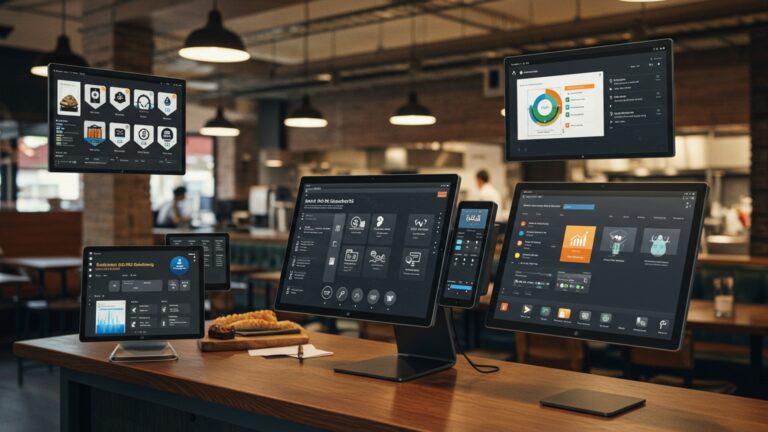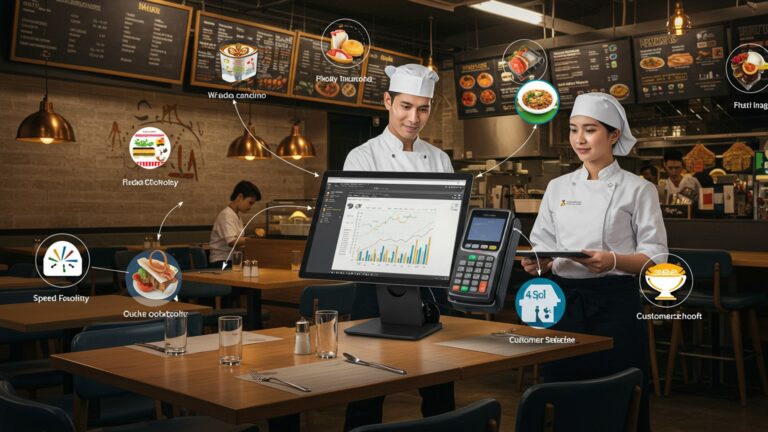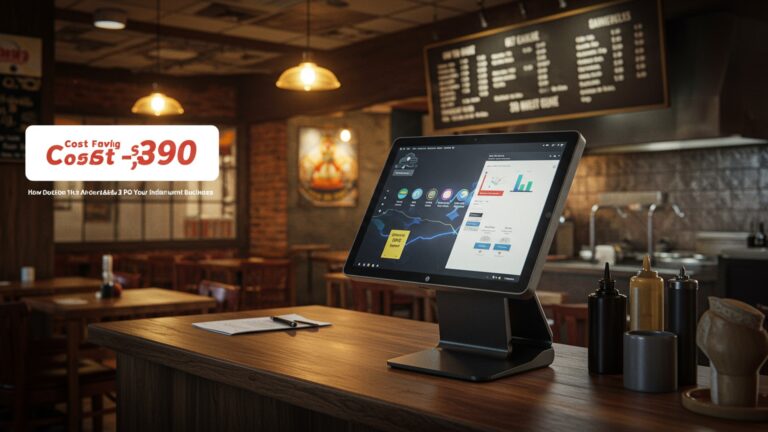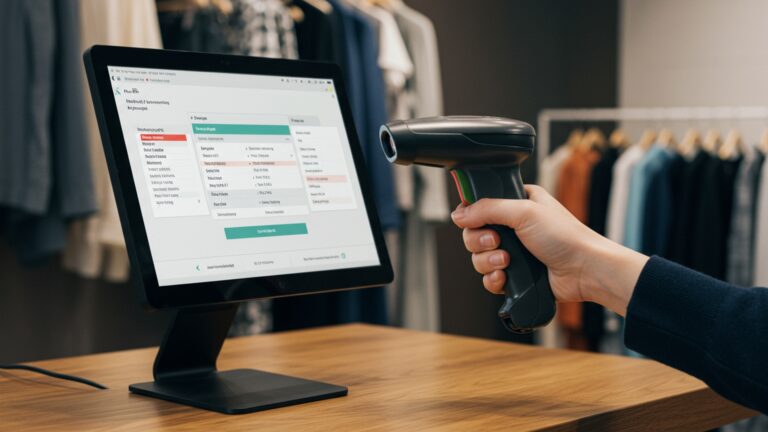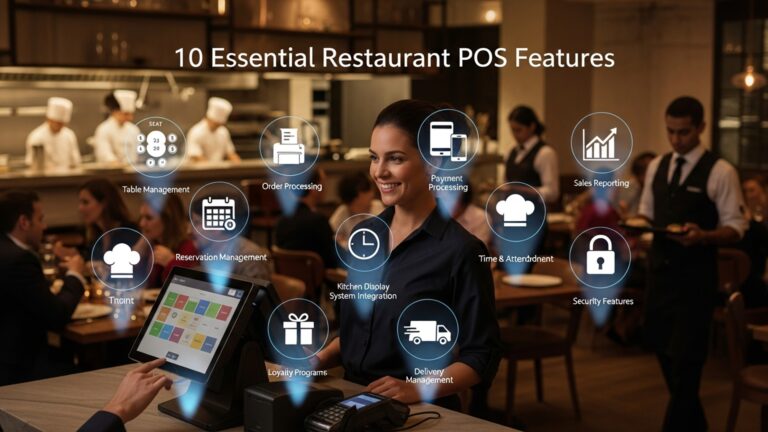5 Essential Android POS Features Every Indian Restaurant Needs
Indian restaurants, from vibrant street food hubs to sophisticated dining rooms, constantly navigate the unique challenges of a bustling culinary scene, demanding operational excellence. Managing intricate, often regional, menus, ensuring rapid table turnover. seamlessly integrating digital payment platforms like UPI during high footfall hours define the modern Indian restaurant’s daily grind. This demanding environment makes a robust Android POS for restaurants India an indispensable asset. It empowers owners to streamline complex KOT management, track real-time inventory for perishable ingredients. centralize customer loyalty programs, ultimately transforming service efficiency and enhancing the overall guest experience in a competitive market.
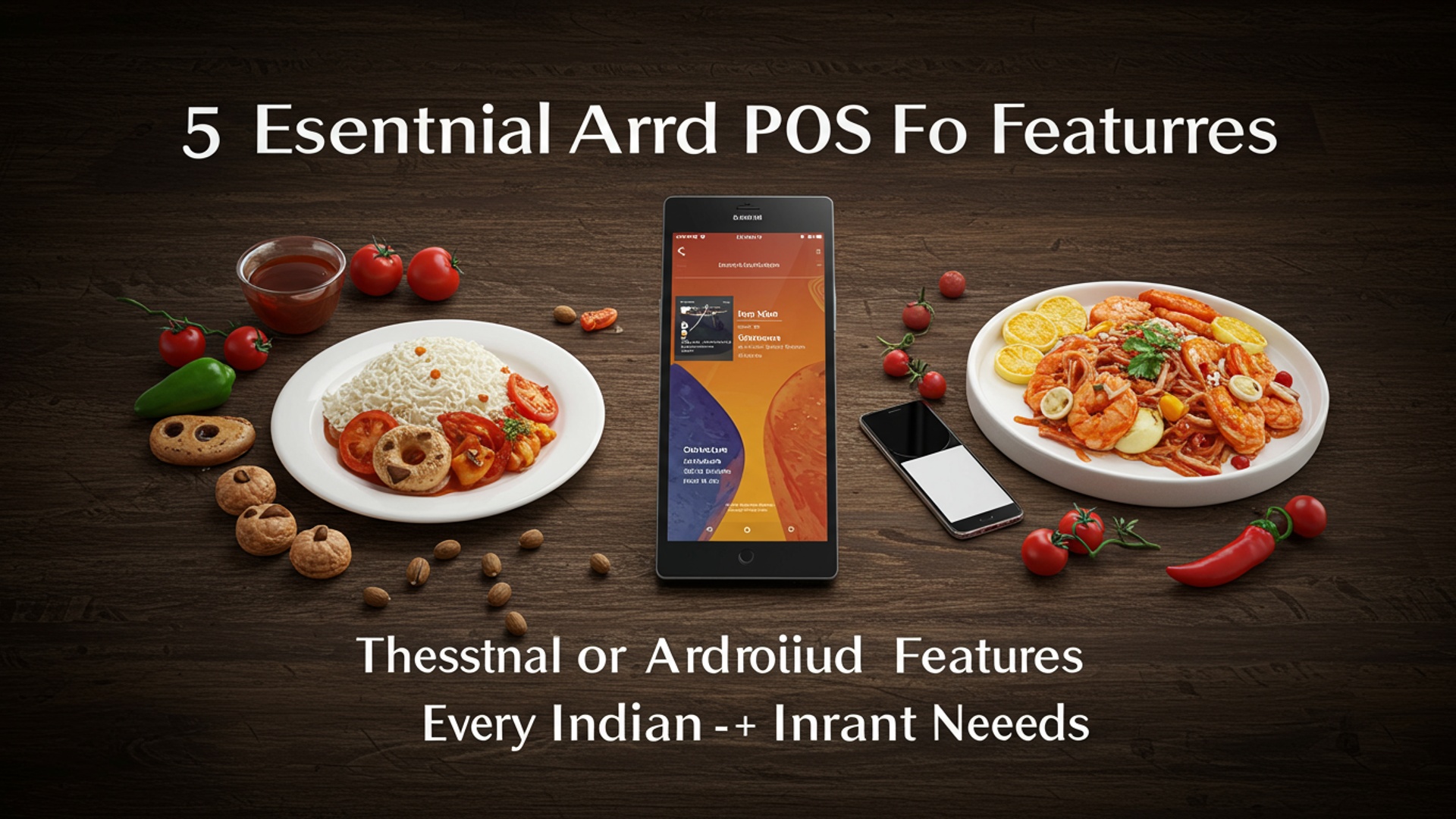
1. Intuitive Order Management with Integrated Kitchen Order Ticketing (KOT) System
In the bustling environment of an Indian restaurant, efficiency in taking and processing orders is paramount. An intuitive order management system, seamlessly integrated with a Kitchen Order Ticketing (KOT) system, is the backbone of smooth operations. This feature, central to any effective Android POS for restaurants India, allows staff to quickly take orders, customize dishes. send instructions directly to the kitchen, minimizing errors and wait times.
What is a KOT System?
A KOT (Kitchen Order Ticket) system digitally replaces the traditional pen-and-paper method of communicating orders to the kitchen. When an order is placed on the POS terminal, a KOT is generated and immediately displayed on a kitchen display system (KDS) or printed at designated kitchen stations (e. g. , tandoor, curry, dessert). This ensures that each section of the kitchen receives only the relevant parts of the order.
- Speed and Accuracy
- Streamlined Workflow
- Reduced Training Time
Imagine a busy lunch hour at an Indian restaurant. A customer orders a “Paneer Butter Masala, medium spicy, no cashews.” Without a robust KOT system, this complex request could lead to miscommunication. An Android POS allows the server to input these specifics instantly, reducing human error and ensuring the kitchen prepares the dish exactly as requested. This not only delights the customer but also prevents food waste due to incorrect orders.
Different dishes often have different preparation times. An integrated KOT system can help manage this by allowing kitchen staff to mark items as prepared, enabling servers to track order progress. For a multi-course Indian meal, this is invaluable for coordinating the delivery of appetizers, main courses. desserts.
Modern Android POS interfaces are designed to be user-friendly, much like the smartphones and tablets we use daily. This familiarity significantly reduces the training curve for new staff, allowing them to become proficient in order taking much faster.
A real-world example of this feature’s impact comes from “Spice Route,” a popular South Indian restaurant in Bangalore. Before adopting an Android POS with integrated KOT, their weekend rush often resulted in incorrect orders and stressed-out kitchen staff. Post-implementation, their order accuracy improved by 25%. average table turnover time decreased by 15%, directly impacting their bottom line and customer satisfaction.
2. Robust Inventory Management with Recipe Costing
For Indian restaurants, managing a diverse array of ingredients – from dozens of spices and fresh produce to various types of meat and dairy – can be a monumental task. A comprehensive inventory management system, especially one that includes recipe costing, is an indispensable feature of an Android POS for restaurants India. It helps control costs, minimize waste. ensure consistency in dishes.
What is Recipe Costing?
Recipe costing involves calculating the precise cost of each ingredient that goes into a dish. By linking recipes to your inventory, the POS system can automatically deduct ingredients as dishes are sold and calculate the exact cost of preparing each item on your menu. This allows you to set profitable prices and identify areas for cost reduction.
- Precise Stock Control
- Waste Reduction
- Profitability Analysis
- Consistency in Food Quality
The system tracks every ingredient, from a kilogram of basmati rice to a gram of saffron. When a “Chicken Biryani” is sold, the system automatically deducts the precise quantities of chicken, rice, spices. oil used according to its recipe. This gives you real-time insights into your stock levels, preventing both overstocking (which leads to spoilage) and understocking (which leads to missed sales).
Food waste is a significant problem in the restaurant industry. By accurately tracking inventory and usage, an Android POS helps identify patterns of waste, such as over-portioning or spoilage of certain ingredients. This data empowers owners to implement strategies like just-in-time ordering or better stock rotation.
With recipe costing, you can clearly see the profit margin on every dish. You might discover that your popular “Dal Makhani,” while a customer favorite, has a very low-profit margin due to the rising cost of pulses, prompting you to adjust pricing or source ingredients more strategically. This granular level of insight is crucial for maintaining a healthy bottom line in a competitive market like India.
By standardizing recipes within the POS system, you ensure that every chef prepares dishes with the exact same ingredients and quantities, leading to consistent taste and quality, which is vital for building customer loyalty.
For “Curry Pot,” a Chennai-based restaurant, implementing this feature meant moving away from manual stock checks and guesswork. They discovered that their most popular dessert, “Gulab Jamun,” had a surprisingly high-cost-to-revenue ratio due to fluctuating sugar prices. With this data, they negotiated better supplier deals and adjusted portion sizes slightly, improving profitability without compromising quality. This level of detail is simply unachievable without a smart Android POS for restaurants India.
3. Seamless Integrated Payment Processing and Billing
In today’s digital age, customers expect a variety of payment options. the checkout process needs to be as smooth and quick as the order taking. An essential feature for any Android POS for restaurants India is integrated payment processing and billing, allowing for diverse payment methods and efficient transaction handling.
What is Integrated Payment Processing?
Integrated payment processing means your POS system is directly connected to payment gateways and card readers. When a transaction occurs, the POS automatically communicates with the payment provider, processes the payment. updates the bill, eliminating manual entry and reducing errors. This contrasts with non-integrated systems where staff might have to manually enter amounts into a separate card machine or payment app.
- Multiple Payment Options
- Faster Checkout Times
- Reduced Billing Errors
- Simplified Reconciliation
India’s payment landscape is incredibly diverse. Customers frequently use UPI (Unified Payments Interface), debit/credit cards, mobile wallets. of course, cash. A robust Android POS integrates with all these options, offering unparalleled convenience. The system should effortlessly handle split payments, where diners divide the bill amongst themselves using different methods.
Manual payment processing can be slow and prone to errors. With an integrated system, a server can generate the bill on their handheld Android POS device, the customer taps their card or scans a QR code for UPI. the transaction is completed in seconds. This significantly reduces queues, especially during peak hours, improving table turnover and customer satisfaction.
Manual entry of amounts into separate card machines is a common source of billing mistakes. Integrated systems eliminate this, ensuring the amount charged is always accurate to the bill generated by the POS. This transparency builds trust with customers.
, reconciling cash, card. UPI transactions can be a nightmare for accountants. An integrated POS automatically records every transaction, categorizes payments. generates detailed reports, making daily reconciliation a breeze and saving valuable administrative time.
Consider “Dosa Delights,” a busy South Indian eatery in Mumbai. They often faced long queues at billing counters due to manual card machine operations. After switching to an Android POS with integrated payment processing, their billing speed increased by 40%. They also noticed a significant reduction in cash handling discrepancies, which previously took hours to resolve. This not only streamlined operations but also provided peace of mind for their staff and management.
4. Customer Relationship Management (CRM) and Loyalty Programs
In the competitive Indian restaurant market, retaining customers is just as crucial as attracting new ones. An Android POS that incorporates Customer Relationship Management (CRM) functionalities and supports loyalty programs can transform casual diners into loyal patrons. This feature allows restaurants to comprehend their customers better and reward their continued business.
What is CRM in a POS Context?
In a POS system, CRM refers to the ability to collect, store. review customer data directly through sales interactions. This includes contact insights, purchase history, dietary preferences. frequency of visits. This data can then be used to personalize service and tailor marketing efforts.
- Personalized Guest Experience
- Effective Loyalty Programs
- Targeted Marketing Campaigns
- Feedback and Engagement
Imagine a regular customer, Mr. Sharma, who always orders the “Chicken Tikka Masala” and a “Masala Chai.” With a POS-integrated CRM, your staff can greet him by name, recall his favorite order. even offer a complimentary chai on his fifth visit. This level of personalization makes customers feel valued and encourages them to return.
An Android POS can easily manage points-based systems, tiered loyalty programs, or discount schemes. For instance, “Biryani House” in Hyderabad implemented a loyalty program through their POS: for every ₹500 spent, customers earn 50 points, redeemable for discounts or free dishes. The POS tracks points automatically, making the program easy to manage for the restaurant and transparent for the customer. This drove a 20% increase in repeat customer visits within six months.
With customer data, restaurants can send out targeted promotions. For example, if the POS identifies customers who haven’t visited in a while, it can send them a personalized SMS with a special discount. Or, if a new “Vegan Thali” is introduced, the system can identify and market it to patrons who have previously ordered vegetarian or vegan options.
Some advanced Android POS systems allow customers to provide feedback directly through a digital interface, linking it to their customer profile. This direct channel helps restaurants quickly address concerns and continuously improve their offerings, fostering a stronger relationship with their clientele.
By leveraging the CRM capabilities of an Android POS for restaurants India, establishments can move beyond transactional interactions to build meaningful relationships, ensuring a steady stream of repeat business and positive word-of-mouth referrals.
5. Detailed Reporting and Analytics for Business Insights
Running a successful Indian restaurant is about more than just serving great food; it’s about making smart business decisions. A truly essential feature of an Android POS for restaurants India is its ability to generate detailed reports and analytics. This data transforms raw sales figures into actionable insights, empowering owners to optimize operations, boost profitability. strategically plan for the future.
What are POS Reports and Analytics?
POS reports are structured summaries of various aspects of your restaurant’s operations, such as sales, inventory. staff performance. Analytics involves the interpretation of this data to identify trends, patterns. insights that can inform business strategies. Essentially, it helps you comprehend “what happened” and “why it happened,” enabling you to predict “what might happen” and “what to do about it.”
- Sales Performance Analysis
- Inventory Usage and Cost Control
- Employee Performance Tracking
- Customer Behavior Trends
- Financial Reconciliation
The POS can provide reports on daily, weekly, or monthly sales, broken down by dish, category, or even server. You can identify your best-selling dishes (“Butter Chicken” might be a consistent winner), your slowest moving items (perhaps a specific regional special isn’t taking off). peak sales hours. This insight allows you to adjust your menu, promotions. staffing schedules accordingly.
Beyond basic inventory tracking, analytics can show you which ingredients are being used most, which have the highest cost. where waste might be occurring. For instance, if your POS reports show a sudden spike in lentil usage but not a corresponding increase in “Dal Tadka” sales, it might indicate an issue with portion control or spoilage.
For larger restaurants, the POS can generate reports on individual server performance, including average order value, sales per hour. tips. This data can be used for performance reviews, incentive programs. identifying training needs.
When combined with CRM data, reports can reveal customer preferences, popular order combinations. the effectiveness of loyalty programs. For example, an analysis might show that customers who order a specific appetizer are more likely to also order a certain main course, allowing for strategic upselling.
Comprehensive reports simplify accounting by providing accurate summaries of all transactions, payment types, discounts. taxes collected, streamlining the process of preparing financial statements.
A case in point is “Taste of Punjab,” a popular eatery in Delhi. Their owner, Ms. Pooja, regularly reviews her Android POS analytics. She discovered that sales of a particular dessert, “Gajar Halwa,” spiked significantly during winter months but barely sold in summer. Armed with this knowledge, she now adjusts her menu seasonally, saving on ingredient costs and focusing her marketing efforts, proving how crucial data-driven decisions are in the restaurant business in India.
Conclusion
Navigating the vibrant, often chaotic, world of Indian gastronomy demands more than just culinary prowess; it requires operational finesse. The essential Android POS features discussed aren’t mere luxuries but critical enablers for seamless order management, swift UPI payments, precise inventory control. insightful reporting. In today’s landscape, where digital payments via QR codes are ubiquitous from a roadside chai stall to a fine-dining establishment, your POS must not just accept them but integrate them effortlessly. My personal tip: don’t just chase features; prioritize a system that offers robust local support and an intuitive interface. I once saw a restaurant invest heavily only to find their staff struggling with complex menus, negating all benefits. Therefore, I urge you to meticulously evaluate solutions, perhaps starting with a free trial, to ensure it truly aligns with your unique workflow. Embrace these technologies. watch your establishment not just survive. truly thrive, delivering an unparalleled experience to every diner.
More Articles
How to Optimize Your Restaurant with Smart POS Software Solutions
Master Android POS Software for Seamless Business Management
A Guide to 10 Essential Online Ordering POS Systems in India
Discover 7 Essential Features for Your Restaurant Billing Software in India
Your Complete Guide to Integrated Billing and POS Software
FAQs
Why should an Indian restaurant bother with an Android POS anyway?
An Android POS streamlines operations, from taking orders to managing inventory and payments. For Indian restaurants, it helps handle complex menus, busy periods. diverse payment options, ultimately improving customer service and efficiency. helping you keep track of everything.
My Indian menu is huge! Can an Android POS handle all the variations and combos?
Absolutely! A good Android POS is designed for flexible menu management. You can easily add various dishes, set up combos, thalis, modify options (like ‘less spicy’, ‘extra gravy’). send precise orders to the kitchen via KOTs (Kitchen Order Tickets), ensuring nothing gets missed.
How does an Android POS make managing tables easier during rush hour?
It’s a game-changer! You can see all your tables at a glance, know which are occupied, available, or needing service. Waitstaff can take orders right at the table using a handheld device, split or merge bills easily. even transfer orders between tables without a hitch, speeding up service when it’s packed.
With so many payment options in India, can these POS systems keep up?
Definitely. Modern Android POS systems are built for India’s diverse payment landscape. They seamlessly integrate with UPI, credit/debit cards, cash. even digital wallets, offering your customers the flexibility they expect and making transactions smooth and quick.
Is inventory tracking actually useful for an Indian restaurant? It seems complicated.
It’s super useful! While it might seem complex, a good POS simplifies it. It helps you track ingredients used in popular dishes like biryani or curries, alerts you when stock is low. even helps identify wastage. This means less food spoilage, better cost control. ensuring you never run out of your bestsellers.
What kind of insights can I get from these POS reports?
You get a treasure trove of data! You can see your best-selling dishes, peak business hours, staff performance. even daily or monthly revenue. This helps you make smarter decisions about your menu, staffing, promotions. overall business strategy.
Why go for an Android POS specifically?
Android POS systems are often more affordable, offer a wider range of hardware choices. are generally user-friendly, making them easy for your staff to learn. Plus, they’re highly adaptable and can integrate with many other apps and services, which is great for a dynamic Indian restaurant environment.

